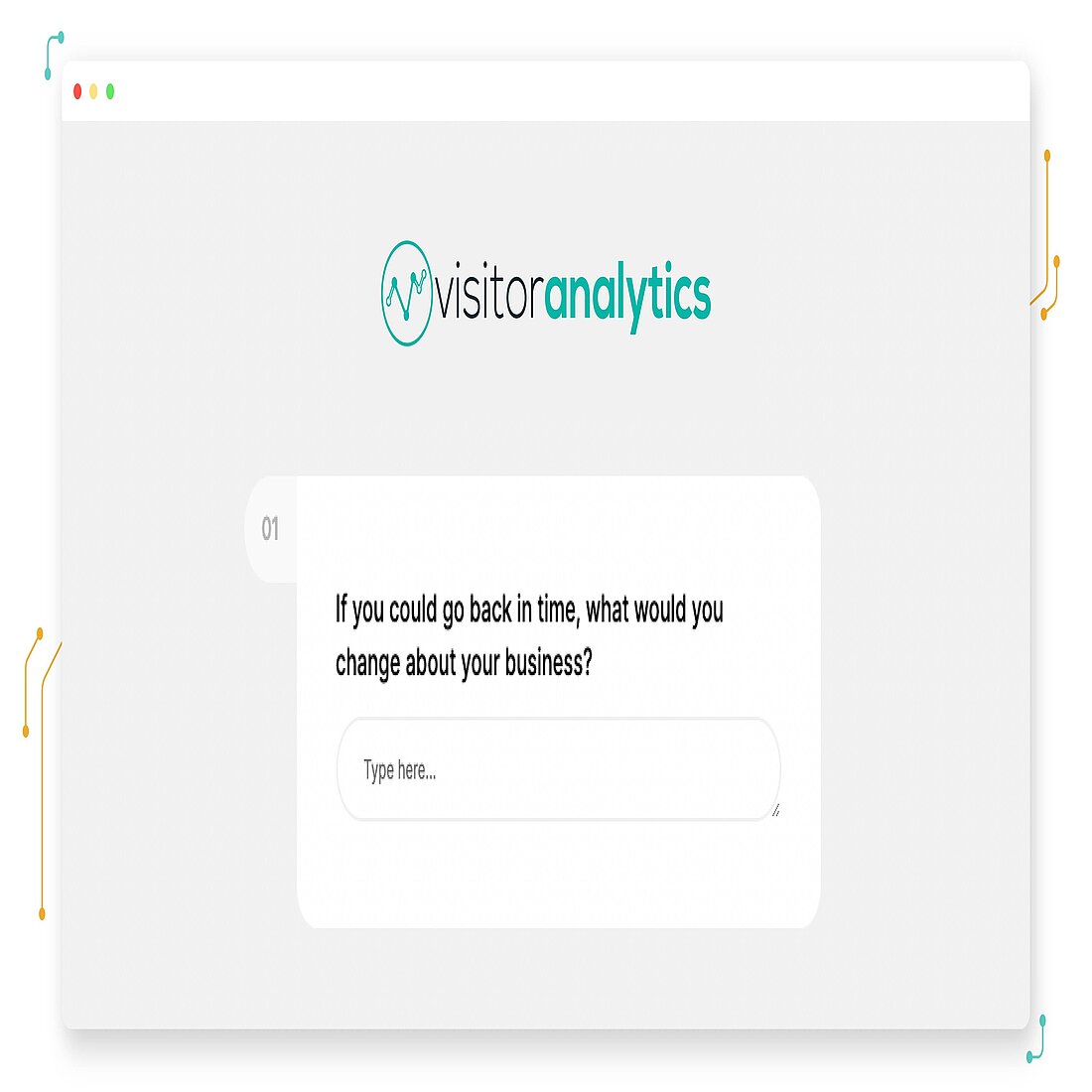- Why Us?
- Features
White Label
For SaaS Platforms & Agencies
Provide our complete analytics suite to your clients, directly within your own interface and with your/their own branding. Discover Analytics-as-a-Service and White Label Analytics. Great benefit, minimal effort.
- Pricing
- White Label
- Success Stories
- Partner
- ResourcesExpand Your Knowledge

Simon Coulthard February 28, 2025
10 min
CONTENTS
- What Are Psychographics in Marketing?
- How Are Psychographics Different from Demographics?
- Why are Psychographics Important in Marketing?
- Is Psychographic Targeting in Marketing Unethical
- What are the Three Types of Psychographics?
- 1. Activities
- 2. Interests
- 3. Opinions
- What is a Psychographics Segmentation?
- What Are the Four Types of Market Segmentations?
- 1. Psychographic Segmentation
- 2. Demographic Segmentation
- 3. Geographic Segmentation
- 4. Behavioral segmentation
- What is an Example of Psychographics in Marketing?
- How to Generate Psychographic Profiles
- 1. Surveys
- 2. Social Media
- 3. Website Analytics
- How to Use Psychographic Research
- Adapt Your Brand Values
- Content Ideas
- Social Output
- Email Marketing
- Landing Pages
- Keyword Targeting
- How Do You Do Psychographic Market Segmentation Without Existing Customers?
- Example Organizations that Help with Psychographics Segmentation
- How do you Define the Psychographics of your Target Market?
- Psychographics Make Marketing Better
Understanding Psychographics in Marketing

Psychographics in marketing is a way to understand who your audience really is and what would make them buy your product.
This market segmentation data is readily available and can be used to supercharge your marketing campaigns, by getting your outreach under the nose of the right people.
Capitalizing on this resource requires that you understand what it is, how you can accurately collect this data, and how to put the rich insights it provides to good use.
This article is here to help, by answering the most common questions that people have about psychographics in marketing. Feel free to scroll through the article at your leisure or alternatively click on the question below to jump to the answer you’re looking for.
What Are Psychographics in Marketing?
Psychographics in marketing is the study of us humans based on our emotional needs and values.
This focuses on our activities, interests, and opinions (you may see this written as AIOs), and enables companies to tailor their marketing to specific consumer requirements.
This is often used as part of a larger marketing data collection process across four different segments - more on that further below.
How Are Psychographics Different from Demographics?
Demographics and Psychographics are two of the four main market segments; they are quite similar and you can use them alongside each other to target the audience most likely to buy from you in the future.
But, while demographics show you who bought your product, psychographics in marketing provides potential explanations as to why they did so.
More specifically, demographic data is used to organize a target audience into groups by age, ethnicity, income, gender, occupation, and geographic location among others.
Psychographics data, on the other hand, looks at their cognitive and emotional characteristics - such as personality, lifestyle, attitudes, values, beliefs, desires, hobbies, and interests.
Why are Psychographics Important in Marketing?
Demographic targeting has long been essential to modern outreach, but psychographics in marketing take this process further by enabling you to tap into your customers’ needs and desires. This information is pure marketing gold, since it can be used to laser-target your marketing outreach and stay competitive.
Is Psychographic Targeting in Marketing Unethical
Ultimately, marketing exists to drive sales; it’s a large part of what keeps companies afloat, and ensures that your colleagues can pay their bills on time. And, given just how competitive industries are today, marketing requires a rich understanding of consumer behavior so as to optimize outreach and resource allocation.
The segmentation of psychographics in marketing is a central component of this process because it’s a highly effective way to learn about your audience, and it is ethical as long as you collect and use this information in the right way - this means getting permission from the people you’re pulling information from, and keeping it safe.
What are the Three Types of Psychographics?
The three main types of psychographics in marketing are activities, interests, and opinions (or AIOs). Let’s break this down a little and see what value you can get from them:
1. Activities
Activities relate to what a person does day-to-day and what their routine may include.
For instance, a person who jogs, takes a bus to work, and plays a lot of sports in their free time is very likely to have different purchasing criteria to a person who drives to work, collects coins, and runs a wine tasting club.
Memberships, choice of getaway, and subscriptions may give marketers an indication as to a person’s activities.
2. Interests
This rather fun area of psychographics includes media and social habits, hobbies, pastimes, and indeed anything else which occupies an individual’s time.
This area is rich with information, as a person may have many interests.
For example, a single, professional woman with a dog may list walking groups, cooking, dog toys, and language learning as interests.
If companies are able to identify the interests of potential customers, they will be better able to tailor campaigns to appeal to them.
3. Opinions
We all have opinions of course, but have you considered how useful this information would be from a marketing perspective?
Our opinions are one of the major factors in our purchasing decisions.
It could be something as simple as what you think of certain public or celebrity figures to the more knotty issues of politics and the environment.
Marketing companies also seek to understand consumers’ opinions on stores, locations, products, and branding, in order to drive successful campaigns.
What is a Psychographics Segmentation?
Psychographic segmentation is the categorizing of people according to things like their psychology, lifestyle, personality, social status, and so forth.
This information enables marketers to position their products in a way that makes them discoverable by the people most likely to buy from them.

What Are the Four Types of Market Segmentations?
The four types of market segmentations are - demographic, geographic, psychographic, and behavioral - and you can find more details about each in the image below:
As you can see from the above image, there is a wealth of information out there on consumers that marketers can use - not only to identify our target audience, but to fine-tune it pretty thoroughly!
Let’s have a look at the four different market segments in more detail:
1. Psychographic Segmentation
Back now to our friend - psychographic segmentation.
As you hopefully now know, psychographics in marketing takes into account the psychological aspects of consumer behavior.
This is achieved by dividing markets according to lifestyle, interests, opinions, values, personality traits, and the like.
2. Demographic Segmentation
As previously mentioned, demographics organize a market by factors such as age, gender, education, income, ethnicity, occupation, family size, and nationality.
Demographics is one of the most commonly used forms of segmentation.
This is because what we buy, how we use our purchases, how much we will spend on them, and where we purchase them from are often based on demographic factors.
3. Geographic Segmentation
Although you will see geographic location within demographic segmentation, Geographic is also a standalone class of segmentation.
Potential consumers will have interests and needs which differ according to where they live, so understanding the geographic regions, and perhaps even climates, of customer groups can help companies to pinpoint where to market and sell their products.
4. Behavioral segmentation
Behavioral segmentation divides markets by decision-making patterns and behaviors, such as consumption, purchase, usage, and again, lifestyle.
For example, younger buyers may tend to purchase a funky-looking, colorful milkshake concoction at a coffee shop, whilst older customer groups may be more inclined to relax over something classic.
Segmenting markets based on purchasing behaviors can enable marketers to develop a more targeted approach. With this information, they can focus on what their consumers like most (and, of course, what they are more likely to spend their money on).
What is an Example of Psychographics in Marketing?
Imagine that the business you're promoting is a luxury services program; you need to identify the target audience most likely to use your service, and have realized that your target client finds it hard to arrange his social life and luxury lifestyle.
He has tried multiple programs before, but none have had the right level of consumer engagement and support.
He is willing to spend more money on the service, but needs to be sure that his needs are catered for and that he will receive the VIP service he deserves.
With this in mind, you can find the psychographic profile of this target client below, with the demographic profile just underneath it for comparison:
Equipped with this information, you will have a better idea of what to focus your marketing campaigns on. You could prioritize outreach within Twitter’s bitcoin community, add Southampton’s boat show to your annual physical marketing calendar, or push your green credentials on your landing pages.
As you can see, the demographic profile provides basic information about your audience, but it’s only through adding psychographic information that can build the customer profile that will effectively drive your marketing campaign.
How to Generate Psychographic Profiles
There are many ways to gather data to create a psychographic profile, but let’s ignore the old fashioned methods and run through the three most effective methods that you can use in-house:
1. Surveys
Surveys are a fantastic way to gather more in-depth psychographic data about your audience.
By structuring your survey effectively and asking good, open-ended questions, you can determine factors which motivate and inspire them - as well as things which may concern or trouble them.
2. Social Media
We should never underestimate the power of social media. Favorite platforms may change, but there is no way it is going anywhere anytime soon!
Given that 58% of people use social media globally (Datareportal), and how much information they’re happy to give out, there is an abundance of information to be had!
Not only this, but on social media, we have a voice… and we use it to say what matters to us. If marketers are savvy, they can pick up more on customers’ likes, dislikes, questions and expectations, and use it to populate their psychographic profiles.
3. Website Analytics
This may come across as a bit obvious - I mean, if you have website analytics of some kind, you are already trying to understand your consumer better. However, you may only be using it for certain things.
The best platforms enable you to collect visitor feedback (or communication), which means that you can get more specific information about who your audience see themselves as.
These are the main ways that you can create psychographic profiles with the tools you already have at your disposal.
But, if none of this is available to you, you can always look further afield, and do other things like organize focus groups or track down a market research company in your industry for advice.
How to Use Psychographic Research
The insights you’ve pulled from using psychographics in marketing research can be used across your outreach strategy, but let’s go through the key channels that they can be applied to:
Adapt Your Brand Values
Psychographics can be used to identify what values your audience has. You can then build these into how your company works (and your external communication), so as to improve your brand image in the eyes of the people most likely to convert.
A software company, for instance, might realize that driving home the importance they place in data privacy regulations will bring in more conversions. Or they might realize that the majority of those surveyed are more interested in how they limit their carbon footprint.
Content Ideas
These insights could well reveal what subjects your audience is most interested in. And, while your content will obviously have to revolve around the characteristics of your product or service, you could easily find related sub-categories that you might not have otherwise considered.
Social Output
Psychographics segmentation enables you to identify the social media platforms that your target audience is most active on, and you can then make data-driven decisions about where your time and budget are best spent.
Go deeper, and psychographics will also pinpoint exactly how you can get the attention of these people.
This could be something as simple as publishing posts during a certain time window, or it could shape the tone or message of the content, or style of imagery.
But getting the right eyes on your ads means that you’re wasting less money and your conversion rate will be higher.
Email Marketing
Psychographic research reveals what your prospects are most interested in and what things reduce the likelihood that they will buy something from you.
As such, you can use these insights when drafting and designing your emails, by giving them the type of content they’ve specified, and by directly addressing their pain points.
The results of this will be clear - higher open rates and better conversion rates.
Landing Pages
Sitting near the end of the conversion funnel, your landing pages are a key determinant of your conversion rates.
You can use psychographics data to decide which aspects of your products to focus on, the tone and messaging of content, what design elements to include, and so forth.
Simply put, this is a really effective way of improving your landing pages.
Keyword Targeting
Psychographics enables you to choose smarter keywords and to narrow down the list that you do use to those most likely to garner the attention of your target audience.
Ultimately, what this does is to take your keyword strategy, and fine tune its scope and cost to the keywords that will be most effective for your business.
How Do You Do Psychographic Market Segmentation Without Existing Customers?
If you do not have existing customers, you can create a psychographics profile of your target audience by carrying out focus group sessions.
Alternatively, you could use a market research company in your industry - this is obviously a more costly approach than in-house data collection, but it can save you money in the long run by targeting your marketing strategy to those most likely to buy from you.
Example Organizations that Help with Psychographics Segmentation
Website analytics companies are a great place to start the process of building the psychographic profile(s) of your target audience, since their platforms can be used to collect the data and visitor feedback you need.
Alternatively, you could turn to market research companies that operate in your sector, since they can provide much of this same information - though it will cost you more money.
How do you Define the Psychographics of your Target Market?
The psychographics of your target market are those personality traits and attitudes that your consumers base their buying decisions on.
You can find this information by collecting website traffic data and/or visitor feedback (communication), or alternatively use focus groups or market research.
Psychographics Make Marketing Better
Pat on the back, you’ve made it to the end!
If you take anything from this article, remember that the more you know your audience, the easier the show!
Harness the insights from this market segmentation and you’ll see tangible improvements in your marketing results.
And, if you’re looking to start using psychographics in marketing, have a look at our visitor feedback tools, as well as our GDPR and data privacy resource hub. It’ll give you a good introduction to how we are able to help you collect psychographic data from your audience - safely and with their permission.
And, if you liked what you read and think it might help other marketers, feel free to share it around!
Share article
Get Started for Free
Gain World-Class Insights & Offer Innovative Privacy & Security

You might also like
What is CX? - Customer Experience in Marketing & Why it’s Important 05 August 2022 - by Simon Coulthard
05 August 2022 - by Simon Coulthard
What is Virtual Reality Marketing? 01 July 2022 - by Simon Coulthard
01 July 2022 - by Simon Coulthard











